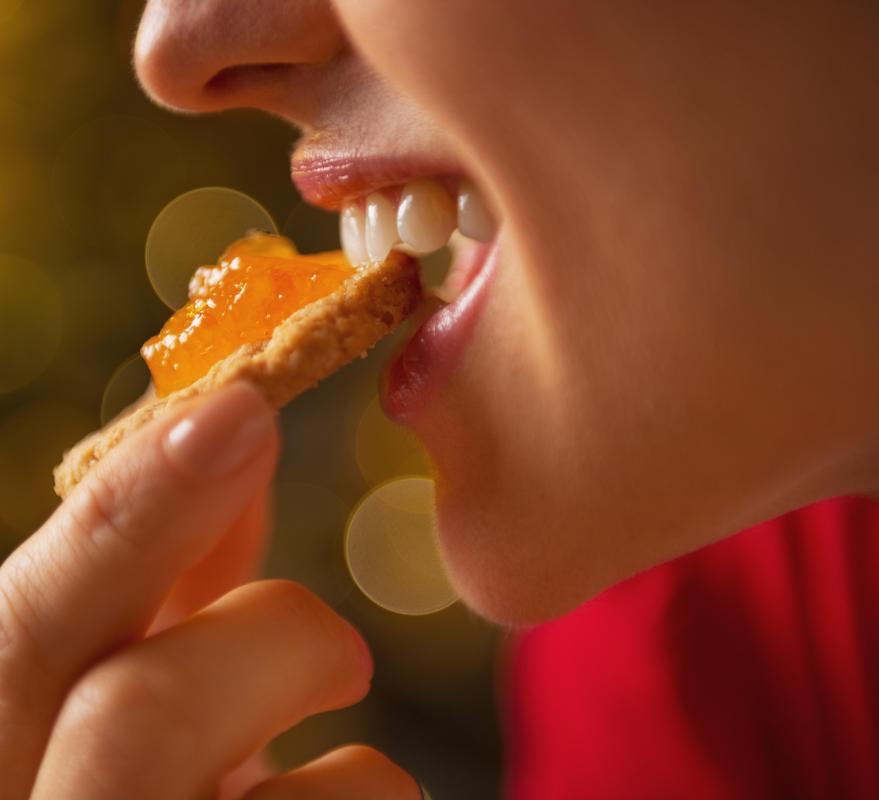At WiseGEEK, we're committed to delivering accurate, trustworthy information. Our expert-authored content is rigorously fact-checked and sourced from credible authorities. Discover how we uphold the highest standards in providing you with reliable knowledge.
What Is Kumquat Jelly?
Kumquat jelly is a smooth condiment made with kumquats, a small fruit with an edible sweet skin and a tart center. The standard recipe for the jelly involves the fruit, sugar, and acidic fruit juice with pectin added as a thickener. This recipe can be altered slightly to make chunky jam or marmalade instead of jelly. Canning in the hot process method allows for shelf storage of the finished product for future use as a spread on bread products or cheese.
Proper preparation of the fruit begins the kumquat jelly process. The skin of the kumquats should be left on since it is flavorful, but the interior seeds, stem, and white center should be removed. Dicing the fruit helps it to cook faster and leaves the result easier to strain.

The smooth consistency of kumquat jelly is achieved through using only the juice of the fruits. Kumquats are cooked in hot water until soft. Cheesecloth can be used to strain the cooked fruit, allowing the juice to separate into a container and leaving the flesh in the cloth. The remaining flesh is typically discarded.
There’s a science involved in making jelly ready to eat and to store. After the kumquat juice has been combined with sugar in a pot, an acidic fruit juice such as apple or orange juice is added to help to make it safe for canning. The polysaccharide thickener pectin is then added so that the condiment becomes jelled.
Jam can be made by pureeing the diced kumquats before continuing with the standard kumquat jelly recipe. This creates a consistency that’s chunkier than jelly, but is still easily spreadable. Marmalade is made by cutting the fruit into large slices so that large pieces remain after cooking. The marmalade version is the chunkiest of the varieties.
Hot process canning can be used to place the finished kumquat jelly in sterilized jars for shelf storage. The prepared jelly is poured in, after which the lids are then tightened onto the jars. Metal tongs are used to lower each jar into boiling water until the lid creates an airtight seal that keeps out bacteria and other contaminants.
Kumquat jam is typically eaten on bread products, such as toast or bagels, that won't compete with the sweet sourness of the fruit. It may also be paired with lightly sweet cakes such as pound cake. A small smear of jelly can also be added to a soft mild cheese for an appetizer.
AS FEATURED ON:
AS FEATURED ON:











Discuss this Article
Post your comments